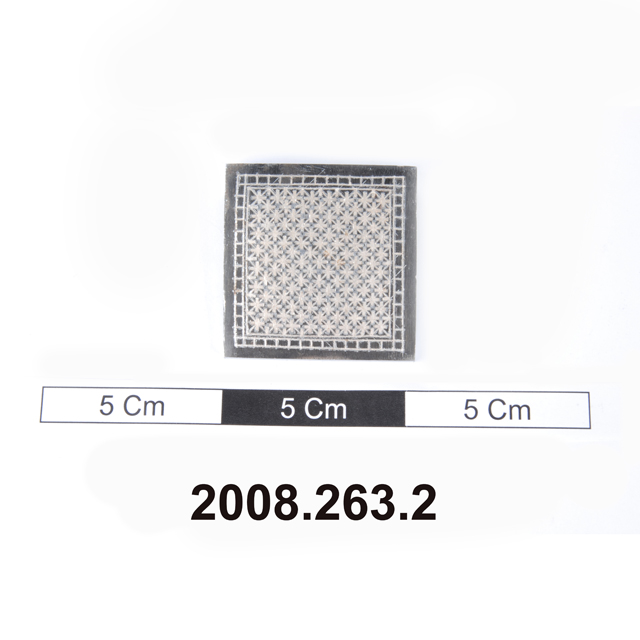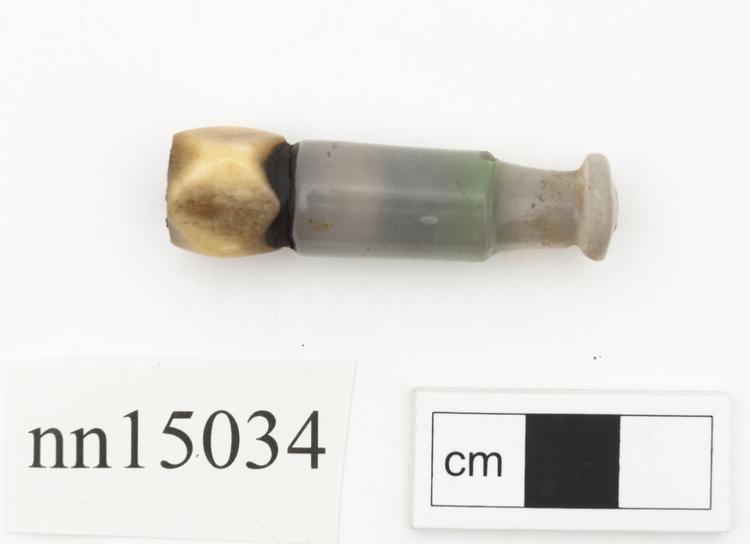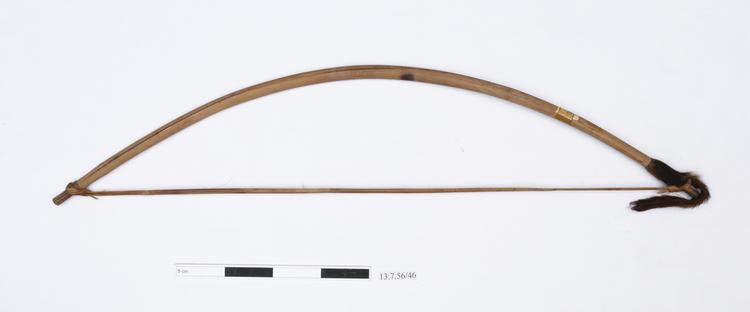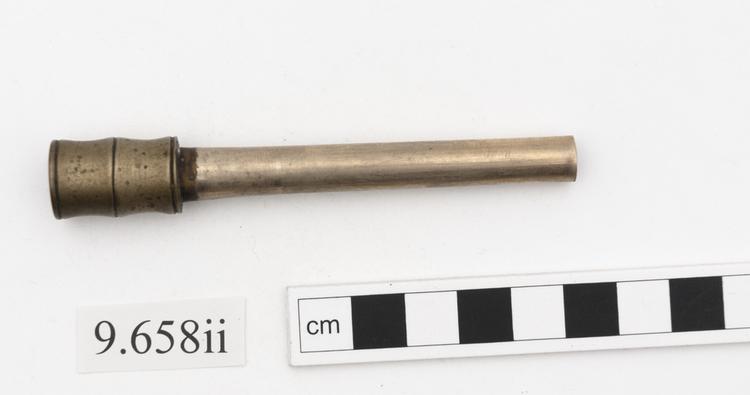
Arrow with bamboo shaft with resinious substance in centre possibly joining 2 sections of shaft. Shaft decorated with panels of red and brown-yellow pigment with painted or burnished designs in black. Cassowary claw head attached to shaft with binding sealed with resin.
Arrow with Cassowary Claw Tip, Tugeri People, Southwestern Papua New Guinea. The Tugeri are an eastern sub-group of the Marind-Anim people straddling the southern border between West Papua and Papua New Guinea. Although all have long since abandoned such practices, all of the Marind-Anim peoples undertook headhunting at the time this arrow was manufactured. The loving care taken over its construction and decoration reflect the importance of warfare within Tugeri society. Although the Tugeri are an inland people, they journeyed downriver to the coast to predate on groups living on coastal islands. As headhunters, they believed that it was necessary to accumulate heads as a means to regenerate the fertility of their lands. There is no stone whatsoever naturally occurring in the forested swampy Tugeri lands, for making arrowheads or other tools. In environments such as this, the hardest materials available to humanity are often animal materials – tooth, bone, horn and so on. For the Tugeri, the cassowary (a dangerous flightless relative of the emu, up to 1.8 m tall) was a significant animal, and this arrow is tipped with the long central claw of such a bird. Arrows of this kind were fired with long, powerful bows of thick-section bamboo. Wood, bird claw, pigment. Late 19th Century.
fighting






